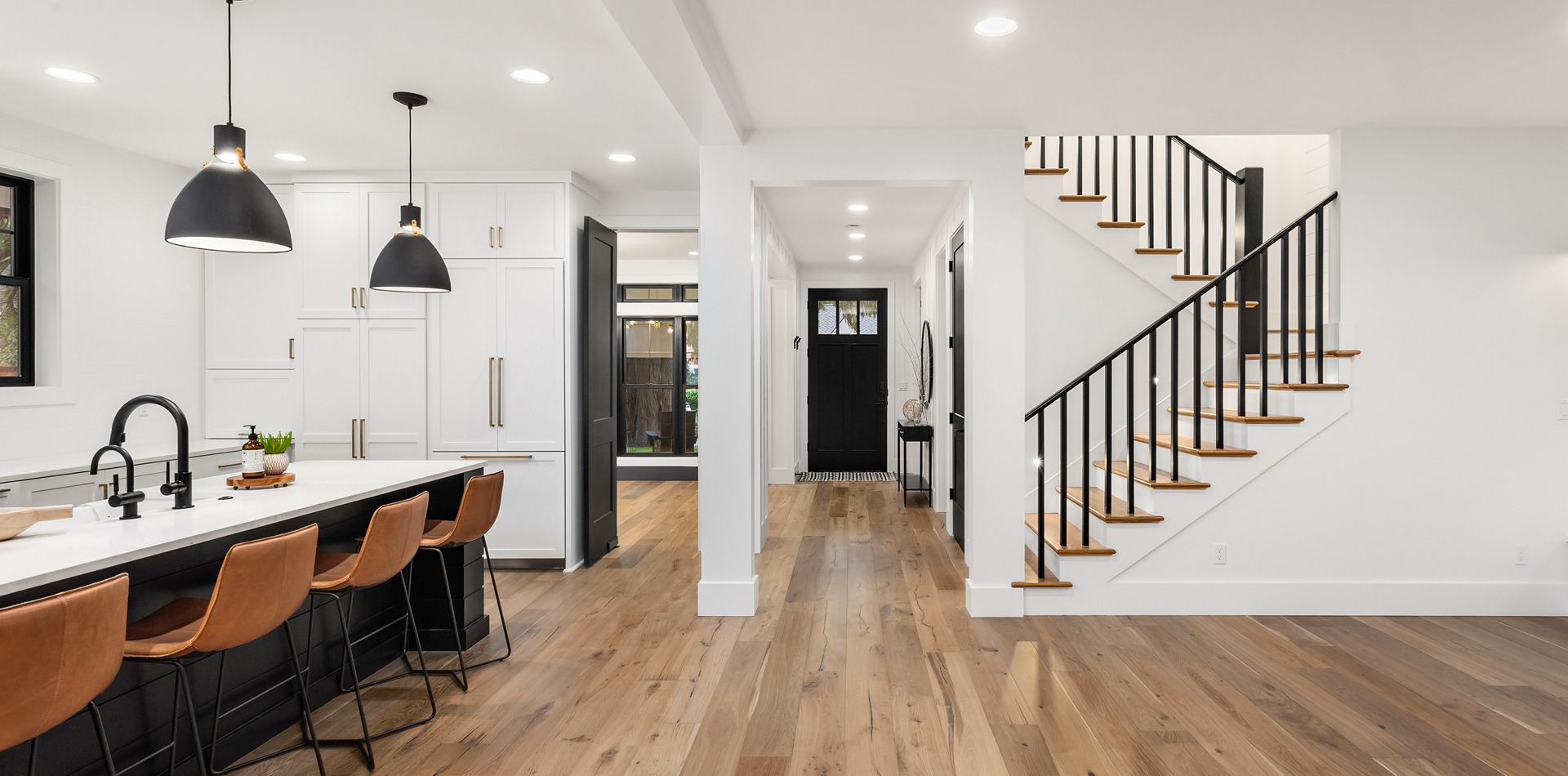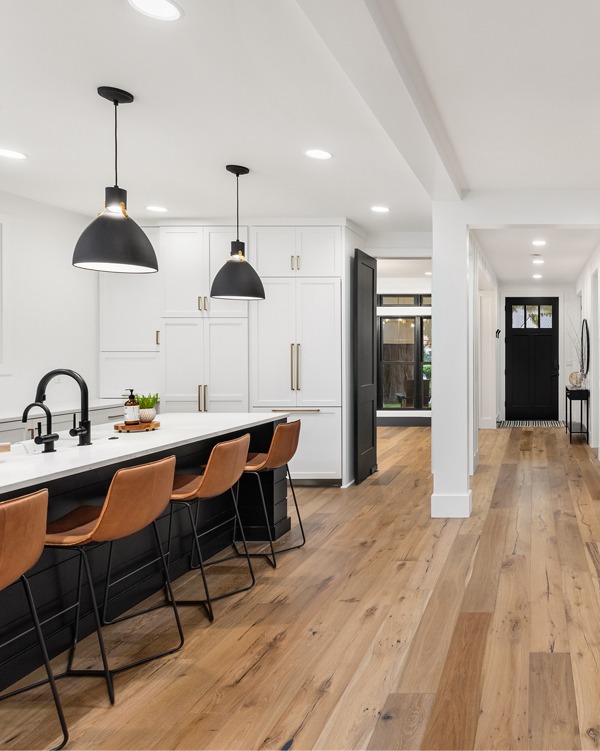Revolutionizing Home Renovations
The world of home renovations is undergoing a significant transformation, driven by the increasing demand for sustainable building materials and smart technologies. As homeowners become more environmentally conscious and tech-savvy, the construction industry is responding with innovative solutions that not only reduce carbon footprints but also enhance the overall living experience. So, what does the future of home renovations hold, and how can you make the most of these emerging trends?
Introduction to Sustainable Building Materials
Sustainable building materials are no longer a niche concept, but a necessity in modern construction. According to the United States Environmental Protection Agency (EPA), the built environment is responsible for nearly 40% of greenhouse gas emissions in the country. As "the built environment has a profound impact on the environment, human health, and the economy," says the EPA. Homeowners and builders are now seeking materials that are not only eco-friendly but also durable, low-maintenance, and cost-effective. Some popular sustainable building materials include reclaimed wood, bamboo, low-carbon concrete, and recycled glass.
The benefits of sustainable building materials extend beyond environmental advantages. They can also improve indoor air quality, reduce energy consumption, and increase property value. For instance, a study by the National Association of Home Builders found that "homes built with sustainable materials can command a premium of up to 10% over traditional homes." This is because sustainable materials often require less maintenance and can withstand the test of time, reducing the need for frequent repairs and replacements.

Exploring Smart Technologies in Home Renovations
Smart technologies are revolutionizing the way we live, work, and interact with our surroundings. In the context of home renovations, smart technologies refer to the integration of advanced systems and devices that enhance energy efficiency, comfort, and convenience. Some examples of smart technologies include energy management systems, home automation systems, and IoT devices such as smart thermostats and lighting systems. These technologies can be controlled remotely, allowing homeowners to monitor and adjust their energy usage, temperature, and lighting levels from anywhere in the world.
The impact of smart technologies on home renovations cannot be overstated. Not only do they improve energy efficiency and reduce waste, but they also enhance the overall living experience. For example, smart thermostats can learn a homeowner's schedule and preferences, adjusting the temperature accordingly to optimize energy consumption. Smart lighting systems can also be programmed to simulate occupancy, deterring potential intruders and improving home security. As "the smart home is no longer a luxury, but a necessity," says a report by the Consumer Technology Association.
Benefits and Challenges of Sustainable Building Materials and Smart Technologies
While sustainable building materials and smart technologies offer numerous benefits, there are also challenges to consider. One of the primary concerns is the higher upfront cost of these materials and technologies. However, as the demand for sustainable and smart solutions increases, prices are expected to decrease, making them more accessible to a wider range of homeowners. Another challenge is the need for specialized labor and training, as these materials and technologies often require unique installation and maintenance procedures.
Despite these challenges, the benefits of sustainable building materials and smart technologies far outweigh the costs. For instance, a study by the National Renewable Energy Laboratory found that "homes with smart technologies can reduce energy consumption by up to 30% compared to traditional homes." This not only reduces greenhouse gas emissions but also saves homeowners money on their energy bills. Additionally, sustainable building materials can improve indoor air quality, reducing the risk of respiratory problems and other health issues. Some of the benefits of sustainable building materials and smart technologies include:
- Reduced energy consumption
- Improved indoor air quality
- Increased property value
- Enhanced comfort and convenience
- Reduced maintenance and repair costs
- Improved home security
Case Studies and Real-Life Examples
To illustrate the potential of sustainable building materials and smart technologies, let's consider a few real-life examples. A homeowner in California, for instance, renovated their home using reclaimed wood, low-carbon concrete, and solar panels. The result was a stunning, eco-friendly home that not only reduced energy consumption but also increased property value. Another example is a smart home in New York, which features a state-of-the-art energy management system, smart thermostats, and IoT devices. The homeowner can control the entire system remotely, adjusting temperature, lighting, and energy usage to optimize comfort and efficiency.
These case studies demonstrate the potential of sustainable building materials and smart technologies to transform the home renovation landscape. By incorporating these solutions, homeowners can not only reduce their environmental footprint but also enhance their living experience. As "the future of home renovations is not just about aesthetics, but about creating a sustainable, comfortable, and connected living space," says a report by the National Association of Home Builders.
Future Trends and Innovations
As the demand for sustainable building materials and smart technologies continues to grow, we can expect to see even more innovative solutions emerge. One trend to watch is the rise of biophilic design, which incorporates natural elements and materials into building design. Another trend is the development of net-zero energy buildings, which produce as much energy as they consume. Advanced materials such as graphene and nanomaterials are also being explored for their potential to improve energy efficiency and reduce waste.
The future of home renovations is exciting and full of possibilities. As homeowners, builders, and architects, we have the opportunity to create living spaces that not only minimize environmental impact but also enhance our well-being and quality of life. By embracing sustainable building materials and smart technologies, we can revolutionize the way we live, work, and interact with our surroundings. So, what's next for home renovations, and how can you be a part of this revolution?
Unconventional Connections
As we explore the innovative world of sustainable building materials and smart technologies, it's fascinating to consider how the principles of efficient design and strategic planning can be applied to other areas of life. For instance, the concept of optimizing energy consumption and minimizing waste can be seen in the strategic gameplay of certain online activities, where players must balance risk and reward to achieve success. By visiting Magic Treasures Dragon slot online demo (IGT) and experiencing the thrill of strategic gameplay, individuals can develop a deeper appreciation for the importance of planning and optimization, skills that can be applied to various aspects of life, including home renovations and sustainable living, ultimately leading to a more mindful and efficient approach to everyday challenges.
Conclusion
In conclusion, the world of home renovations is undergoing a significant transformation, driven by the increasing demand for sustainable building materials and smart technologies. As we've seen, these solutions offer numerous benefits, from reduced energy consumption and improved indoor air quality to increased property value and enhanced comfort and convenience. While there are challenges to consider, the future of home renovations is bright, with emerging trends and innovations that promise to transform the way we live and interact with our surroundings. By embracing sustainable building materials and smart technologies, we can create a better future for ourselves, our communities, and the planet.


